Schönbrunn Palace – An Imperial Jewel in Vienna
A majestic summer residence on the outskirts of Vienna, it stands as a living testament to the opulent history of the Habsburg Empire. Since its construction in the 17th century, it has impressed generations of emperors, empresses, and guests with its Baroque splendor and expansive gardens.
Contents
An imperial jewel in the heart of Hietzing
Schönbrunn Palace, prominently located along Vienna’s B1, is much more than just a magnificent palace building.
The 190-hectare estate in the Hietzing district is home not only to the zoo, the Gloriette, and the Palm House, but also to numerous hidden treasures such as the Small Gloriette, the Dovecote, and the Princes’ Play Pavilion. In addition to the well-known fountains, you can also discover the Obelisk Fountain and the Neptune Fountain.
The expansive gardens, lovingly tended by numerous gardeners, invite strolling and relaxation. Schönbrunn Palace is therefore a place full of surprises, revealing new facets of its beauty and history with each visit.
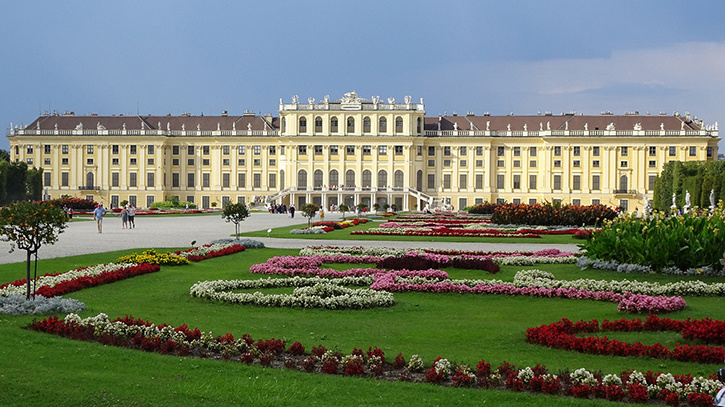
From Hunting Grounds to Imperial Palace: The Eventful History of Schönbrunn Palace
Fischer von Erlach: Visionary Architect of Schönbrunn
In 1687, Johann Bernhard Fischer von Erlach, one of the most renowned architects of his time, was commissioned to design a new structure for Schönbrunn. His original design was so magnificent that it would have outshone Versailles.
Ultimately, a scaled-down version of the design was implemented. Fischer von Erlach was also responsible for other remarkable buildings in Vienna, including the MuseumsQuartier, the Imperial Court Library, the Winter Riding School of the Hofburg, and the Karlskirche. His architectural influence extends far beyond Vienna.
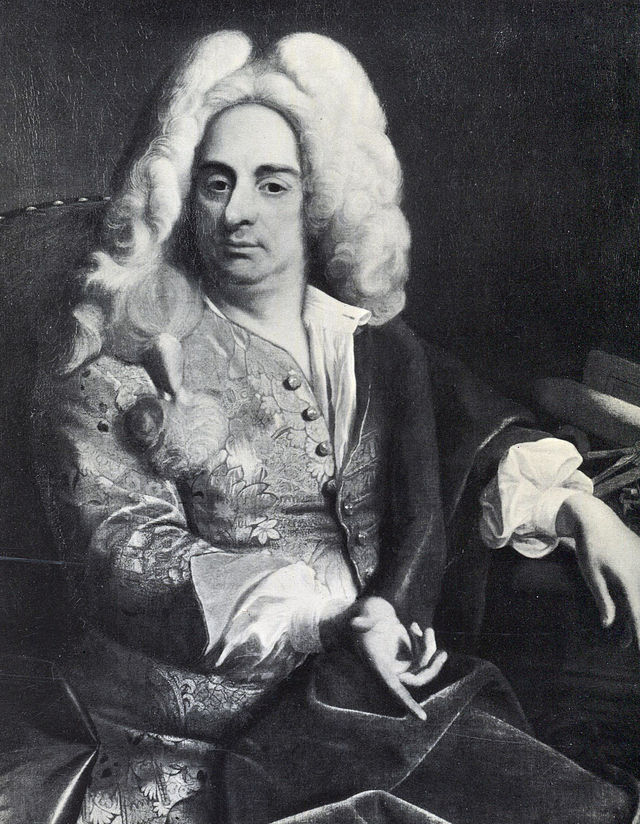
Maria Theresa and the Golden Age of Schönbrunn
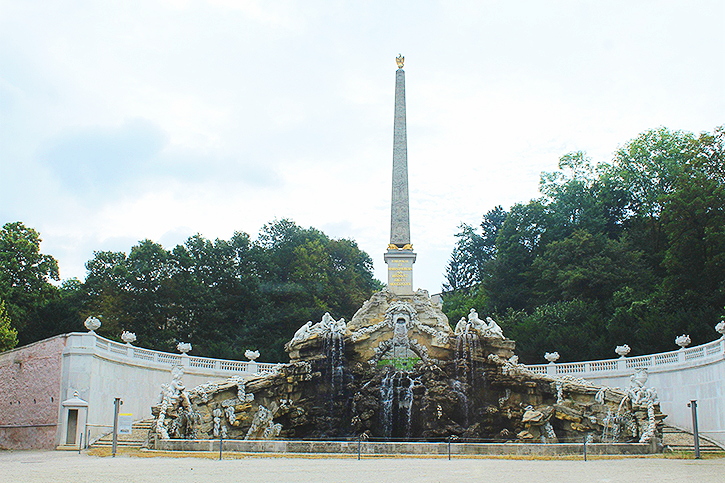
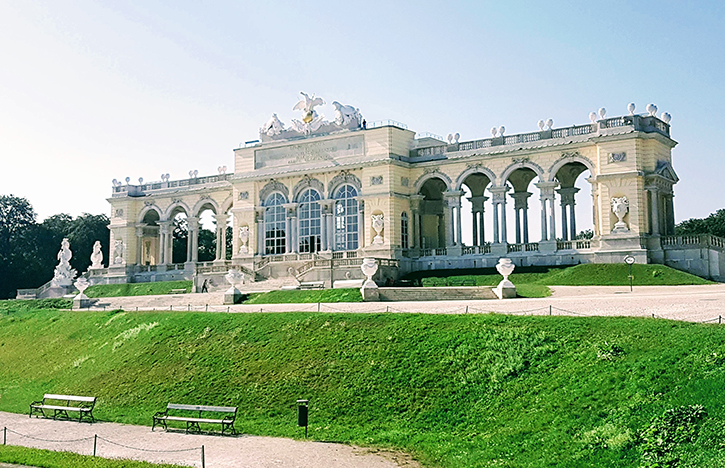
Schönbrunn Under French Occupation: Napoleon’s Stay and the Peace of 1809
Schönbrunn Palace was not only a setting for imperial summer retreats but also a witness to historic events.
During the Napoleonic Wars, Schönbrunn Palace was occupied twice by French troops. In 1805 and again in 1809, the palace served as headquarters for Napoleon and his entourage.
In 1809, the Treaty of Schönbrunn was signed here, which brought peace to Austria but also resulted in significant territorial losses and the loss of access to the sea.
Franz Joseph I and Sisi: Imperial Joy and Shadows at Schönbrunn
In 1853, Franz Joseph met Elisabeth, known as Sisi, at an arranged meeting and fell in love with her. However, their marriage was marked by conflict from the very beginning. Sisi, who had received a liberal upbringing, struggled with the strict conventions of court life. While Schönbrunn was a place of comfort and familiarity for Franz Joseph, it became a symbol of restriction for Sisi, likely intensified by the control of her mother-in-law.
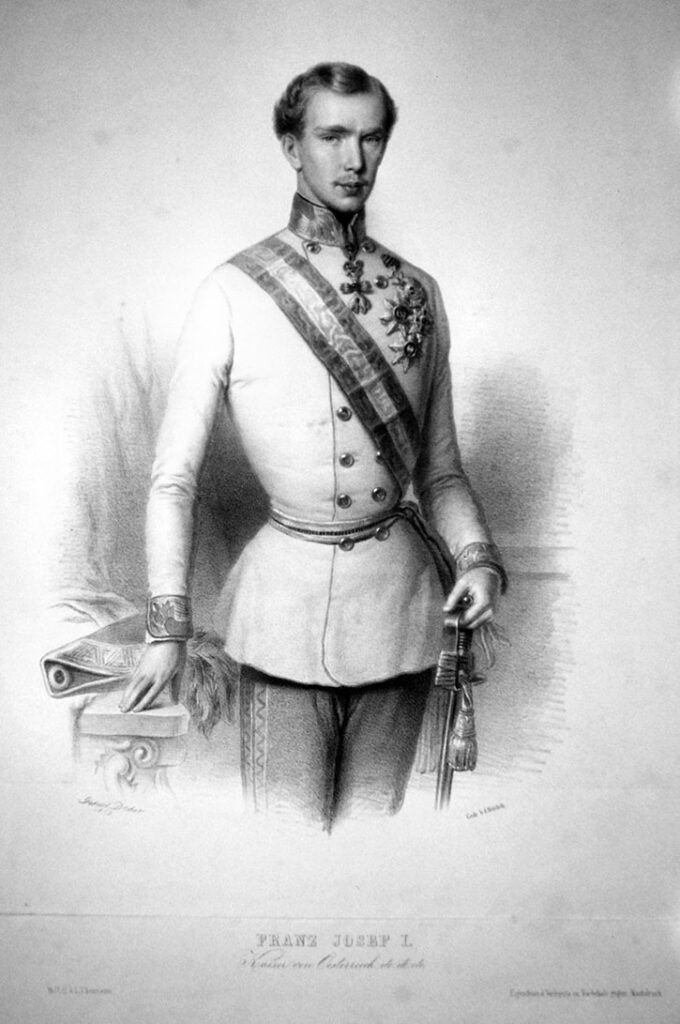
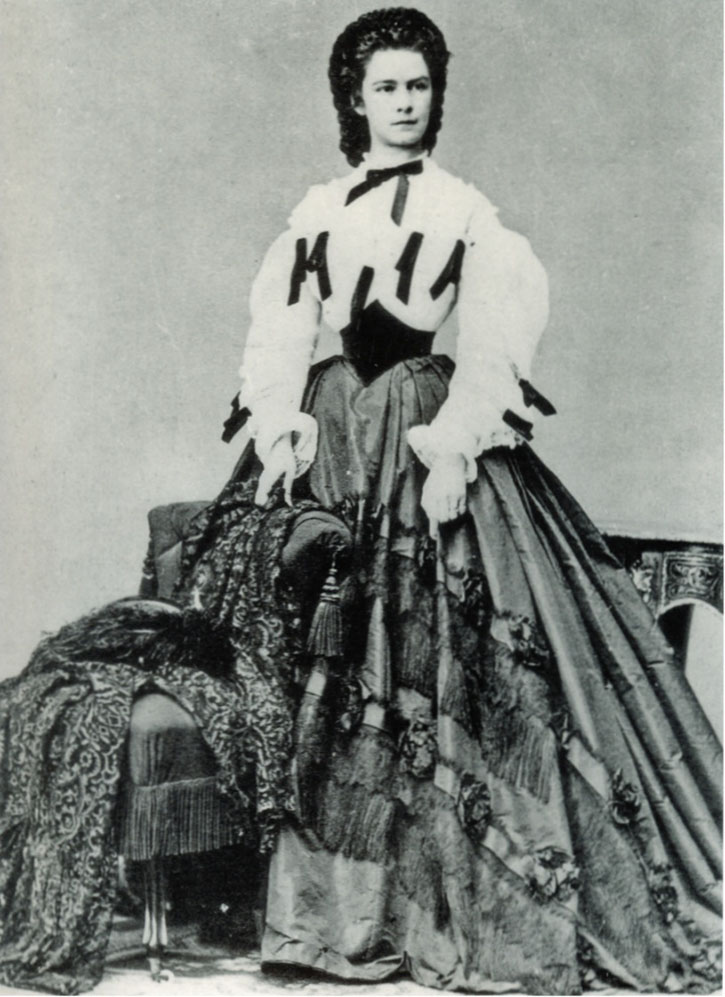
A refuge of freedom and independence
The representative salons of the palace shone in the traditional color scheme of white, red, and gold, but were fundamentally redesigned after the wedding of Franz and Elisabeth. The Emperor moved into his living and working quarters in the west wing, while Elisabeth initially had an apartment overlooking the Hietzing Chamber Garden.
However, the unconventional Empress longed for more freedom and independence. A few years later, in 1862, she had her own apartment set up on the ground floor. Here, she could indulge her fondness for the color purple and even had a secret exit to the garden, allowing her to take undisturbed walks.
In close proximity was the riding hall, where Elisabeth pursued her passion for dressage. She also enjoyed riding in the more secluded parts of the park, often accompanied by her beloved dogs. One of her quotes reflects her special relationship with Schönbrunn:
“At Schönbrunn, the Gloriette and those parts of the park that the public doesn’t like belong to me.”
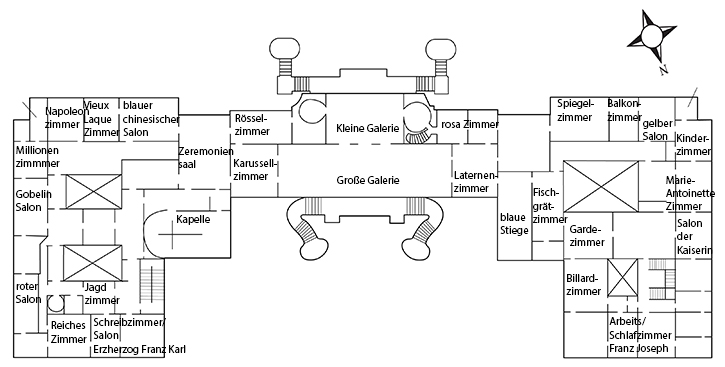
From Imperial Palace to Public Museum
After the death of Emperor Franz Joseph I in 1916 and the abdication of his successor Karl I in 1918, Schönbrunn Palace became the property of the Republic of Austria. This marked the beginning of a new chapter in the palace’s history, as it faced an uncertain future.
Initially, the entrances to the palace were sealed, and an inventory of the imperial possessions was conducted. However, the residents of the palace, including the staff of the former imperial family, were allowed to stay for the time being. There were numerous plans for the future use of the palace, which were met with skepticism by its residents.
In the first years after the monarchy, Schönbrunn served, among other purposes, as accommodation for war veterans. In the summer of 1919, a children’s home and a teacher training school were established in part of the auxiliary buildings, but they did not last long due to organizational issues.
The former imperial apartments remained untouched by these changes and were opened to visitors as early as 1919. By the 1920s, the palace had already gained great popularity, attracting thousands of visitors each year eager to catch a glimpse of its magnificent rooms.
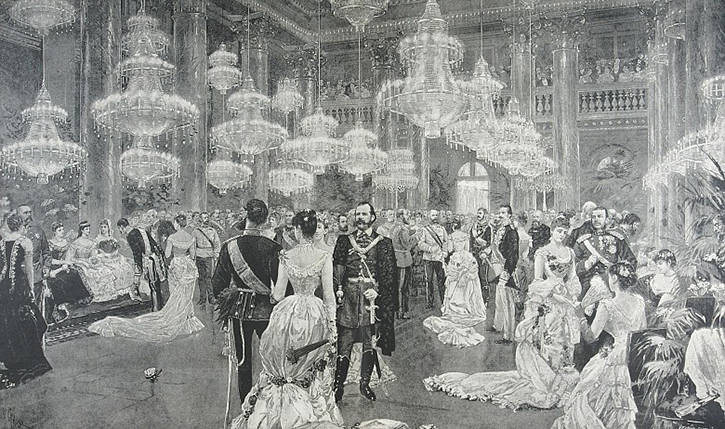
Schönbrunn Palace: More Than Just a Museum – Economic Factor and Residence
Schönbrunn Palace is not only a historical jewel but also an economic driver for Vienna. With around nine million visitors annually exploring the palace, park, and its attractions, Schönbrunn generates impressive revenues of over 60 million euros. The responsibility for managing and preserving this significant cultural asset lies with the Schönbrunn Culture and Operations GmbH. Interestingly, some of the 1,441 rooms of the palace, which are not used for museum purposes, are even rented out to private individuals.
Stage for Music and Culture
Schönbrunn Palace offers its visitors not only museum rooms but also various guided tours such as the Sisi Tour and the Imperial Tour. Additionally, the palace is a popular venue for concerts, including open-air performances by international stars and Austrian artists. A special highlight is the annual Summer Night Concert by the Vienna Philharmonic in June.
The interior rooms of the palace are also used for events, such as the daily classical concerts in the Orangerie, where a chamber orchestra performs works by Mozart and Strauss.
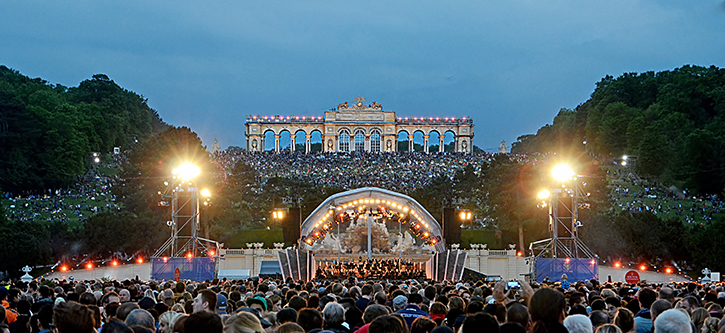
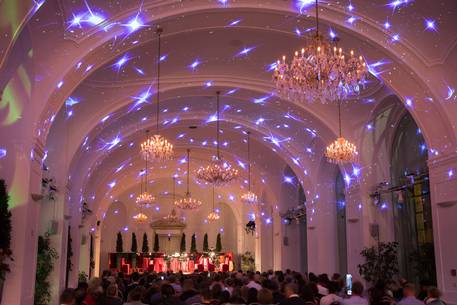
Classical Concerts at Schönbrunn: Experience Music in Imperial Surroundings
Would you like to experience a classical concert at Schönbrunn Palace? You can easily find tickets and schedules on the website palaceconcertsvienna.com
Viennese classical music at its best
